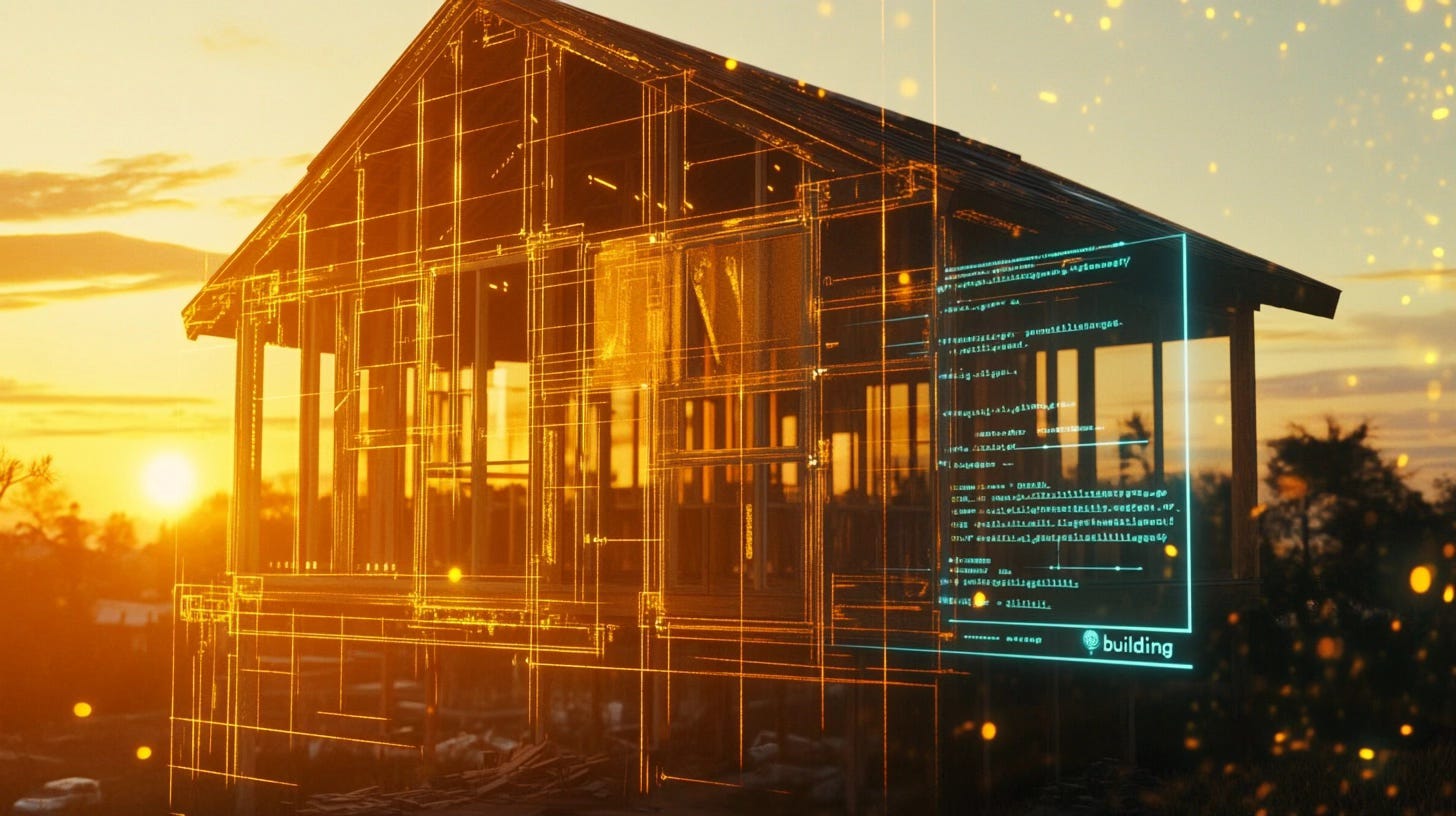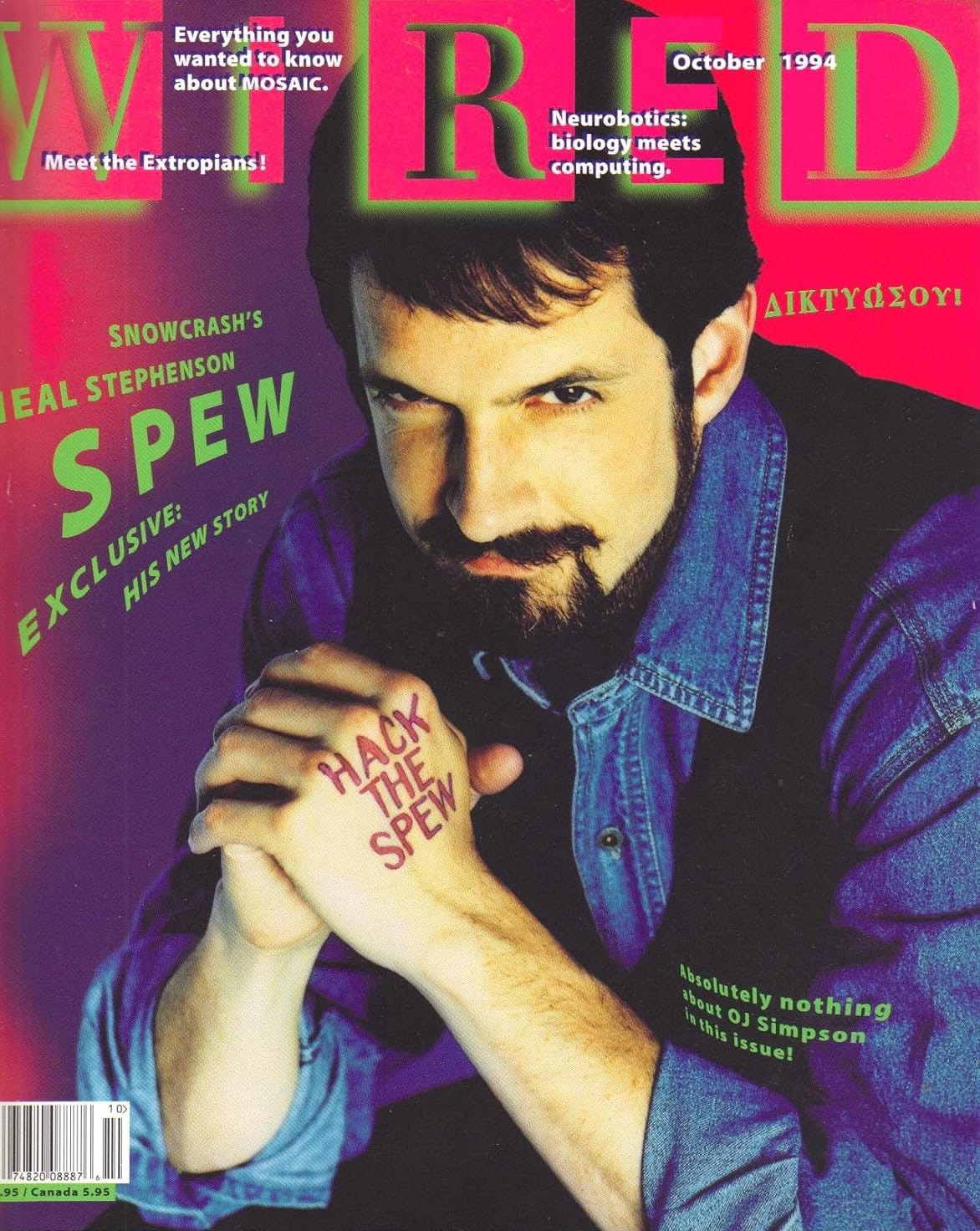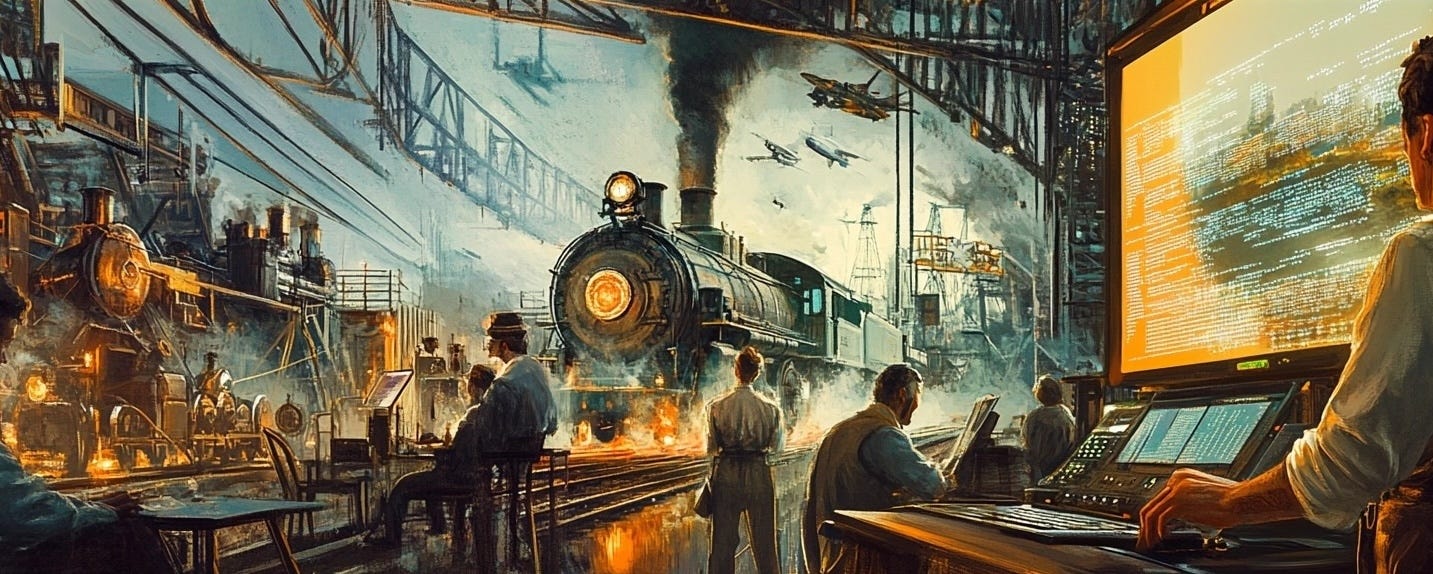From Sawdust to Syntax
Re-Learning How to Build in the Age of AI
I still taste the salt air of coastal Carolina when I think about building. At twenty-five I was the county’s youngest licensed general contractor, convinced that cedar-shake shingles and sixteen-penny nails were my permanent vocabulary. By twenty-eight I was signing Chapter 7 papers, the housing cycle having yanked the joists out from beneath my balance sheet. Failure, stubborn and precise, shoved me into a Nortel Networks cubicle where I taught myself SQL after hours—an accidental database developer in a sea of telecom engineers, stacking tables instead of floor trusses, wildly over my head yet hooked on the same rush: turning nothing into something.
That’s when an orange-spined magazine detonated my imagination. Wired Vol. 2 No. 10, October 1994, promised “Everything You Wanted to Know About Mosaic.” Gary Wolfe’s essay painted the browser as a doorway to a vast, clickable universe. I wasn’t fluent in HTML—truth be told, I barely grasped TCP/IP—but the article convinced me the Web was a half-framed jobsite begging for anyone brave enough to sling digital lumber. The builder in me stirred.
A decade later I co-founded a cloud-based SaaS platform in Cary, North Carolina. Venture dollars replaced concrete trucks; we scaled servers instead of scaffolding. In 2024, I shook Marc Andreessen’s hand in a cavernous Wynn Las Vegas hallway—a brisk thirty-second exchange that felt like touching the far end of a timeline that began with the Mosaic browser three decades earlier and now pushes forward under the Build banner he and Ben Horowitz are unfurling as they reshape a16z into America’s next great builder’s foundry.
Vibe-Coding: The New Hammer
Over the past month, I have sat before my Mac Studio, with its companion 49-inch curved monitor glowing LED headset, and uttered a few tentative sentences into Cursor and Windsurf. Code blossomed on the screen. Functions compiled. I tweaked a prompt, spoke again, and watched an entire authentication flow ravel itself together. Vibe coding, I realized, is to 2025 what swinging a hammer was to 1985: the elemental motion of making. I’m no software engineer—never claimed to be—but AI copilots grant me just enough leverage to turn articulate English into shippable product.
GitHub’s own research backs up the feeling: developers working with Copilot complete tasks about 55 percent faster than those who fly solo. The spreadsheet math says I gained half a day; the gut feeling says I gained a super-power.
Extrovert in a Feedback Loop
People often imagine coders as cave-dwellers, but I’m wired the opposite way. I feed on conversation, new acquaintances, kinetic brainstorming. Vibe-coding taps that same social energy—the feedback loop is immediate and conversational. I ask, the model answers; I redirect, it adapts. It feels less like commanding a machine than collaborating with a hyper-responsive teammate who never sleeps.
A Nation of Builders, Recut
America’s story has always been a construction chronicle. The settlers of Plymouth and Williamsburg raised timber walls against Atlantic winds. Railroad crews spiked steel rails from Omaha to Sacramento. Industrialists forged turbines that powered the Allied victory, and NASA stitched silicon and aluminum into the Apollo capsule. When I was a kid, Research Triangle Park was pine forest and tobacco rows; by the 1990s it had become the East Coast’s Silicon Valley because a few visionaries refused to stop building.
Now the raw material is language. We are erecting virtual worlds faster than fifty Amish farmers can raise a barn, and those barns may soon exist in both physical and digital space, synchronized by streams of photons. Between now and 2030:
Voice-sketched apps will compile in minutes.
Generative factories will 3-D-print components on demand.
Entire neighborhoods will begin life as polygons in mixed-reality headsets before a single footing is poured.
The blueprint has become a prompt; the scaffold, a Git repo; the timetable, a real-time dashboard that updates at the speed of speech.
Why It Matters
Building is more than an economic act; it’s a cultural posture. When the hammers fall silent, doubt rushes to fill the void. But every new tool—steam, steel, silicon, and now syntax—re-opens the frontier. Vibe-coding is just the latest hammer in a lineage that stretches from log cabins to lunar landers. Its promise is not that everyone becomes a software engineer; it’s that every curious mind gains the agency to create.
Join the Build
So here I stand—still restless, watching paragraphs become packages, sentences become servers. If you feel that same magnetic pull to make, remember: the jobsite is global, the permit is your imagination, and the raw material is your voice. Drop a comment about what you’re building. Subscribe for the next dispatch. Let’s raise a few digital rafters together—faster, smarter, and with the frontier spirit that has always defined us.




